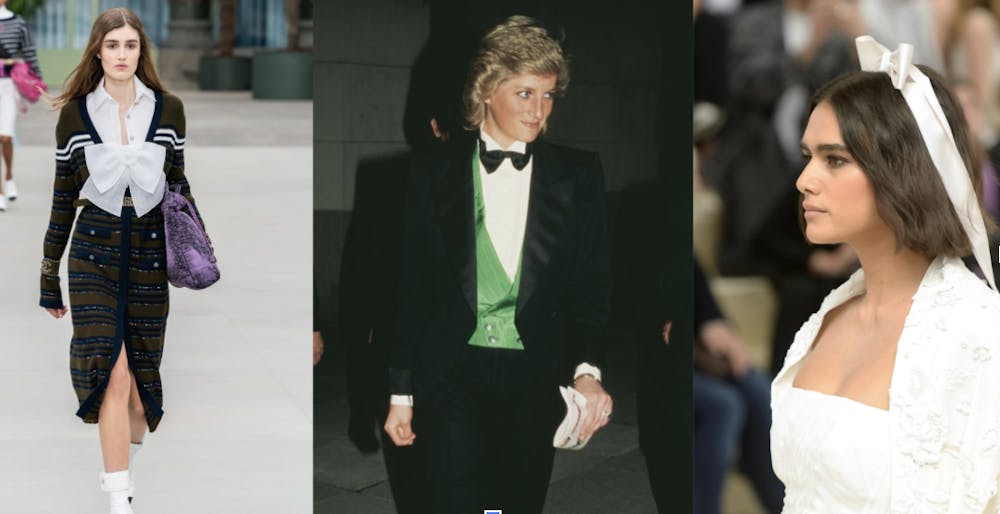It’s everywhere: featured on runways, in a young girl’s hair walking to school, in a portrait of Marie Antoinette. There’s no denying that the bow is a prominent accessory that has long since integrated itself into our lives.
The accessory gained significant attention in November 2023 due to the rise of the coquette aesthetic, featuring feminine elements such as the colors pink and white. In addition to the aesthetic’s color scheme, bows and pearls were a large component of this trend.
In Style magazine wrote that these versatile accessories are expected to be featured even more in upcoming runway seasons due to their increase in popularity. More affordable brands such as Urban Outfitters, Emi Jade and Free People have included this timeless accessory in recent clothes, further proving how this accessory is here to stay.
But bows have been a favorite accessory for centuries.
The Metropolitan Museum displays the first documentation of the gold material accessory which dates back to 2500-2600 BC with the Sumerians, the oldest known civilization. The bows are displayed in the “Jewelry: The Body Transformed” attraction, which alludes to the fact that this civilization used bows as an accessory.
One tale of the bow’s rise in fashion took place during the reign of King Louis XIV, when Marquise de Fontange, the king’s mistress, was on horseback and lost her hat. At the time, it was considered inappropriate to go horseback riding with untied hair, so she tied her hair with a ribbon.
The improvised hair tie apparently made quite the impression on her fellow riders, and the accessory rapidly grew in popularity among the aristocracy. According to Harper’s Bazaar, Marie Antoinette loved including bows in her hairdo, and her hair stylist allegedly spent 20,000 francs on hair ribbons for her.
By the 1960s, the meaning behind bows shifted from royal status to women’s empowerment.
As women began working outside of their homes, opportunities for employment increased and women gained the ability to apply for any job. They began to wear bows to represent the decades of misogyny and discrimination within the workforce. The bows went from a symbol of femininity to a practical hair piece that allowed women to keep their hair bound while they worked.
Women’s suite wear featured a “bow-tie,” which was referred to as the 1980’s bow-top of that time. It was a bold accessory worn by Princess Diana and other prominent fashion figures such as Grace Kelly, Catherine Deneuve, Brigitte Bardot and Audrey Hepburn.
From the 1990s up to the present day, the bow has consistently made appearances in fashion shows. According to Harper’s Bazaar Luxury, designer Liushu Lei states “the bow is powerful.” High-end brands including Moschino, Miu Miu, Chanel and Comme de Garçons have all featured bows within their designs.
The bow has developed various interpretations and meanings throughout the years, and the beauty behind this accessory is due to various meanings. Whether you want to embrace a more feminine look by tying a bow in your hair or try to find a way to complete your outfit, the bow is timeless, and the perfect way to tie any look together.
This article was edited by Eliza DuBose, Sara Winick and Abigail Pritchard. Copy editing done by Luna Jinks, Leta Lattin, Charlie Mennuti and Julia Patton.





